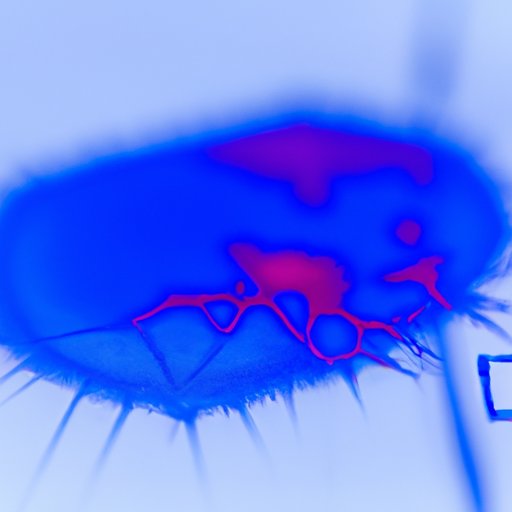
Introduction
Bloodstain Pattern Analysis (BPA) is a fascinating field of study that plays a crucial role in solving crimes by examining the patterns of bloodstains left at crime scenes. BPA provides valuable scientific evidence that helps investigators reconstruct the events that led to a crime, and ultimately helps bring perpetrators to justice.
Investigating Crime Scenes: The Basics of Bloodstain Pattern Analysis
At a crime scene, investigators are looking for clues that will help them determine what happened, how it happened, and who may be responsible. Bloodstain pattern analysis is one of the many methods used in forensic science to help investigators unravel the mysteries of a crime.
There are three basic types of bloodstain patterns commonly found at crime scenes: passive, transfer, and spatter. Passive stains occur when blood drips or pools onto a surface, transfer stains occur when blood is deposited onto a surface by an object or body in motion, and spatter occurs when blood is dispersed due to force or impact.
A Closer Look at Bloodstain Pattern Analysis and Its Role in Forensic Investigations
Bloodstain pattern analysis plays a critical role in forensic investigations by providing evidence that can help answer key questions in criminal investigations. While BPA is not a definitive science, it provides information that can help corroborate other types of evidence and provide a clearer picture of what happened at a crime scene.
However, there are limitations to BPA. It cannot reveal the identity of a suspect or provide a motive for the crime. It is also important to remember that BPA is just one tool in a forensic investigator’s toolkit, and it is important to consider BPA evidence in the context of other evidence from the crime scene.
Understanding the Science Behind Bloodstain Pattern Analysis
Bloodstain pattern analysis is based on the science of fluid dynamics, which describes how fluids behave when they are in motion. When blood is released from the body, it behaves like any other fluid and follows the laws of physics.
Several tools and techniques are used in bloodstain pattern analysis, including luminol, which is used to detect blood that has been cleaned up, and computer software that can help analyze complex bloodstain patterns.
How Bloodstain Pattern Analysis Helps Crime Sleuths Pin Down Perpetrators
Bloodstain pattern analysis can be used to help identify suspects by providing information about where the perpetrator may have been located, how much force was used, and the direction and speed of the perpetrator’s movements. This information can then be used to create a profile of a potential suspect.
There have been countless cases where bloodstain pattern analysis played a crucial role in solving a crime. For example, in the O.J. Simpson trial, bloodstain pattern analysis was used to show that Simpson’s claim of not being at the scene of the crime was false.
Blood Spatter Analysis: Interpreting and Extracting Clues from Crime Scene Evidence
Interpreting and extracting clues from bloodstain patterns requires precision and attention to detail. Investigators use tools like protractors, rulers, and string to measure and document the size, shape, and location of bloodstains.
It is important to remember that each bloodstain has a story to tell, and investigators must be diligent in extracting all of the information they can from each stain.

Solving Mysteries: How Bloodstain Pattern Analysis Helps Unravel Hidden Truths
Bloodstain pattern analysis has played a critical role in solving many mysteries, including cold cases that have gone unsolved for years. By re-examining the evidence with new technology and techniques, investigators have been able to uncover new leads and solve cases that were once thought to be unsolvable.
One example of this is the case of the Atlanta Child Murders, where bloodstain pattern analysis helped to finally identify the perpetrator, Wayne Williams, and bring him to justice.
Decoding Bloodstains: A Step-by-Step Guide to Analyzing Crime Scene Evidence
For those who may encounter bloodstain evidence in their work or personal life, it is important to know how to analyze it properly. Here is a step-by-step guide:
- Identify the type of bloodstain pattern
- Measure and document the size, shape, and location of each bloodstain
- Determine the directionality of the bloodstains
- Analyze the spatter pattern
- Consider other factors like lighting and weather conditions that may have affected the bloodstain pattern
Remember to approach bloodstain evidence with an open mind and be meticulous in your analysis.
Conclusion
Bloodstain pattern analysis is a crucial tool in solving crimes and bringing perpetrators to justice. By understanding the science behind BPA and how to analyze bloodstain patterns, anyone can become a valuable contributor to the forensic investigation process.
The role of bloodstain pattern analysis in solving crimes cannot be overstated, and it is important for investigators, legal professionals, and the general public to continue to learn more about this fascinating field of study.





